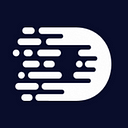DeTech.World streamlines multi-chain transactions
How many years have we been discussing the complexity of blockchain adoption due to multi-chain interoperability? The discussion around the complexity of blockchain adoption due to multi-chain interoperability has been ongoing for several years. The challenges and importance of interoperability have been recognized since the early stages of blockchain technology. The multi-chain transaction challenge refers to the difficulties and complexities associated with conducting transactions across different blockchain networks or chains. It arises due to the decentralized nature of blockchain technology, where multiple independent chains operate with their own unique protocols, consensus mechanisms, and smart contract capabilities.
Addressing these challenges requires the development of standardized protocols, cross-chain infrastructure, and interoperability solutions. Efforts such as cross-chain bridges, interoperability protocols (e.g., Polkadot, Cosmos), and layer-two solutions aim to tackle these obstacles and enable seamless multi-chain transactions.
We have an exciting solution that will revolutionize the way you conduct business in the digital era! Introducing Blockchain Abstraction Layer (BAL), the cross-platform framework to simplify and streamline blockchain development process
Discover the power of the Blockchain Abstraction Layer (BAL) framework — BAL design principles:
- Minimum Coordination. In its intended usage, the contract will be used by many independent organizations with unrelated ownership, distinct processes, disparate standards, and diverse backgrounds. The contract should work within these organizations’ existing paradigms, adding value to their existing product without imposing changes to their processes or complicating their negotiations with partners.
- Scalability. The contract should be designed with resource constraints in mind, to ensure that it can function indefinitely without unmanageable growth in resource consumption. It should minimize usage of blockchain space and bandwidth, and remove records handling from blockchain when they are no longer needed.
- Flexibility. The contract is intended for use by many parties, possibly via different apps, so it needs to be flexible to their different needs and focuses. It should define only a baseline minimum functionality common to all participants in a supply chain, and it must be capable of following the vicissitudes and changing plans that can occur in the real world.
- Simplicity. The contract should be simple and easy to understand, with clear documentation and minimal complexity or focus on detail. The details and frills can be managed by front-end applications, but variations between front-end nuances should not impair the core functionality of the contract.
- Traceability. Only live data necessary for contract operations is kept in blockchain RAM; any other information must be extracted from historical data. This process is straightforward, but slow and resource intensive. The contract should be designed so that historical data contains linkages which can be followed and history can be compiled with no more work than is necessary.
Blockchain Abstraction Layer (BAL) allows to streamline the development and deployment of smart contracts across various blockchains. It acts as a comprehensive library and environment for smart contract code and simplifies the complexities of different blockchain metadata, providing a unified foundation for multi-chain interaction.
Visit our website now to discover how our technology can revolutionize your business operations. Join the ranks of innovators and take a leap towards a seamless, efficient, and secure digital future.
